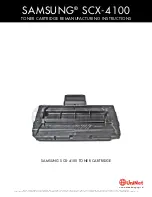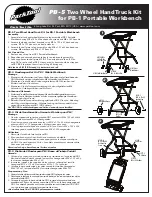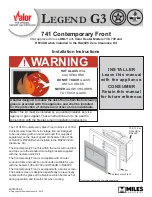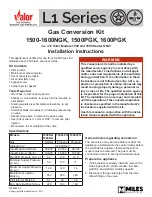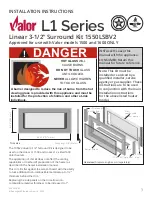
Updated: Apr 20, 2017
Page: 1
BRx6 Sensor Calibration Using SurvCE/SurvPC
OVERVIEW
The BRx6 internal sensors (tilt, accelerometer and compass) must be calibrated in order to use the
electronic bubble and tilted pole corrections in SurvCE. This document describes in detail the
process for calibrating the BRx6 internal sensors using SurvCE or SurvPC version 5.05 or higher.
The complete calibration consists of three steps: 1) Tilt Calibration, 2) Magnetic Spin and 3)
Directional Incline (magnetic declination).
Step 1 calibrates the tilt sensors used by the electronic bubble or LDL (Live Digital Level) feature
in SurvCE. If you only plan on using the leveling features like LDL (or electronic-bubble), level
tolerance checking or auto store by leveling then you only need to perform Step 1 calibration.
Steps 2 and 3 calibrate the e-compass sensors in the BRx6 and are only required if you are
planning to use SurvCE’s tilted pole correction feature while taking GNSS measurements in
SurvCE’s Store Points or Stake functions.
NOTE: The magnetic calibrations (Steps 2 and 3) are valid for a limited geographic area,
depending on the local magnetic field parameters. In general, the farther you go from the
calibration point (in tens of miles or kilometers, not typically feet or meters), the more the
calibration accuracy degrades. SurvCE contains a simple routine called “One Point Calibration
Check” that makes it easy to validate the accuracy of magnetic calibration at a new location. With
the BRx6 position FIXED, go to the Equip tab, select GPS Utilities, select Sensor Calibration, then
select One Point Sensor Test.
The One Point Sensor Test uses a two-step process to validate the magnetic calibrations. First,
holding the pole vertical and steady, tap Start. The utility to average several FIXED positions to
determine the current location. Second, lean the pole at an angle of not more than 30 degrees
and rotate the receiver in different directions. The utility checks both the calculated position and
elevation differences from the actual position established in point 1. As long as the position or
elevation differences are less than 0.050 m (0.17 feet) with a tilt angle of 30 degrees of less, the
magnetic calibration should be good. If the differences are greater the 0.050 m (0.17 feet) it would
be a good idea to recalibrate the receiver before doing inclined pole corrections.
Lastly, the magnetic anomalies exist throughout the earth’s surface. There may be locations
where it is not impossible to use the BRx6’s magnetic sensors or e-compass or to successfully
calibrate the BRx6 sensors.
PREPARATION
The following equipment is required to complete all three calibration steps. Only items 1 and 2 are
required for Step 1.
1. SurvCE or SurvPC version 5.05 or higher installed on your data collector
2. A quality, calibrated tribrach with accurate vials. A line vial is usually more accurate than a
spherical vial. For Step 1, the tribrach can be set on a solid table or tripod, for Step 2 the
tribrach should be mounted on a solid tripod.
3. Pole not less than two meters long with calibrated vial attached is required for Step 3 and
can be used for Steps 1 and 2. The tilt sensor calibration will only be as accurate as the
vials on the tribrach and pole.
4.
A connection to a base station using the BRx6 internal radio, the BRx6 internal GSM cell
modem or Data Collector Internet mode is required for step 3. It is best if
the effective baseline distance is less than
1 kilometer (.6 miles).
5. Mini-rotary bracket assembly that is included with the BRx6 kit.
The three
mini-rotary bracket components are shown in this picture.












